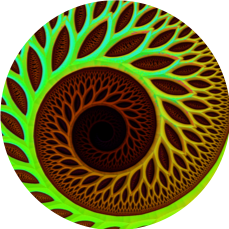The mitochondrion endosymbiotic hypothesis
While the mitochondrion is a membrane-bound organelle, its hypothesized origins are a story of entrapment...literally! Mitochondria are unique among the organelles, because they have their own DNA, and subsequently are capable of synthesizing their own ribosomes and proteins. The mitochondrial DNA does not produce all of its proteins, it is semi-dependent upon the nucleus for certain proteins. The presence of mitochondrial DNA hints at its extracellular origin.
Mitochondrial DNA was decoded and compared with similar gene sequences of all known organisms, and it was loaded deep within the bacterial domain. This suggests that the mitochondrion was a bacteria that was hijacked by a very early eukaryotic cell. But how?
Eukaryotes that have lost their mitochondria (like yeast) can only go through the glycolysis step of cellular respiration, which produces a net of 2 ATP (the cell’s universal energy currency). However, a eukaryotic cell with mitochondria can take the same glucose molecule and produce a net of up to 25 ATP! It is thought that in the world of early Eukarya, one eukaryotic cell (with a nucleus and intramembrane system) engulfed a bacteria (we now know as the mitochondrion) but didn’t digest it. That cell was capable of harnessing up to more than 12 times the amount of energy from a single glucose molecule! Natural selection favored this amazing increase in efficiency, and the mitochondrion-enabled eukaryote outcompeted all other extant eukaryotes, forming the base of Eukarya. All present day eukaryotes are thought to have emerged from this single cell! That is what is meant by Eukarya is monophyletic.
While the mitochondrial DNA evidence is extremely strong support for the endosymbiotic hypothesis, there are additional lines of evidence. The mitochondrion has two membranes. It is thought that the inner membrane of the mitochondrion is a remnant of the proto-bacteria. Evidence that supports this is the presence of peptidoglycan in the inner membrane. Peptidoglycan is a polysaccharide that only bacteria generate. The outer membrane is devoid of peptidoglycan and more closely resembles the plasma membrane of the eukaryotic cell. Therefore, it is hypothesized that the outer membrane of the mitochondrion is a remnant of the plasma membrane of the original eukaryotic cell that engulfed the proto-bacteria. Amazingly the chemical structures of the original organisms involved in the engulfment event have maintained in tact for the past 2 billion years!
